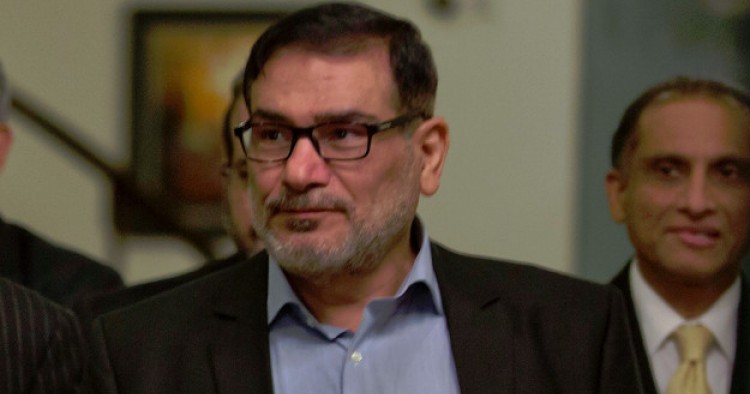The Secretary of Iran’s Supreme National Security Council Ali Shamkhani today met with his Russian counterpart Nikolai Patrushev in Moscow to discuss the conflict in Syria, state-run Islamic Republic News Agency reported. The two sides pledged to continue support for the Bashar al-Assad regime against armed opposition groups. They also discussed ways to boost intelligence sharing and coordinate military and diplomatic efforts more effectively in Syria and other conflict zones in the region. According to IRNA, Shamkhani also raised the issue of increased military involvement of the United States and its regional allies in Syria. He alleged that the latest military and diplomatic gains of Damascus and its allies have prompted Washington and regional countries to increase support for what he called terrorist groups fighting Damascus. Shamkhani stressed that Assad’s foreign allies should work in unison to empower the Assad regime and accelerate the inter-Syria dialogue to “foil plots” by states that “sponsor terrorism.”
Comment: There has been a growing concern in Tehran that the increased military activities of the U.S. military along Syria’s borders with Jordan and Iraq may be a prelude to a broader plan by Washington and its regional allies to “invade” Syria, empower anti-Assad rebel forces, and reverse the military gains of the Syrian regime and its foreign allies. The U.S. air strikes last Friday targeting an Iranian-directed convoy in southern Syria has added to Iran’s worries.
Although it is not yet known whether the U.S. strikes were one-time event or represented a significant change in U.S. military involvement in Syria, Iranian leaders see the latest U.S. military actions as a serious threat to the survival of the Assad regime as well as to their own regional ambitions. For now, the U.S. military says it was a defensive measure as the Iran-led forces were approaching a “de-confliction” zone where the U.S. and British forces are training Syrian groups to fight the Islamic State.
Just days before the strike, the Iranian media had reported on the deployment of over 1,000 Hezbollah and other Iran-led militia forces to southern Syria to “block the advance” of “U.S.-backed” forces from southern Syria into central and eastern regions of the country. The move was perhaps also aimed at testing the U.S. resolve. But now that the U.S. did take action - the first U.S. attack against Iran-backed militias in Syria - it appears that the Iranian government is reaching out to Russia to act collaboratively against the U.S.-supported groups.
This is because Tehran understands that the participation of Russian troops along with Iran-led forces in southern and eastern parts of Syria would reduce the chance of U.S. military action against those forces. It remains to be seen, however, if Moscow will agree to get involved in a risky move that could potentially put the Russian military in a direct confrontation with the U.S. forces.
The Middle East Institute (MEI) is an independent, non-partisan, non-for-profit, educational organization. It does not engage in advocacy and its scholars’ opinions are their own. MEI welcomes financial donations, but retains sole editorial control over its work and its publications reflect only the authors’ views. For a listing of MEI donors, please click here.












